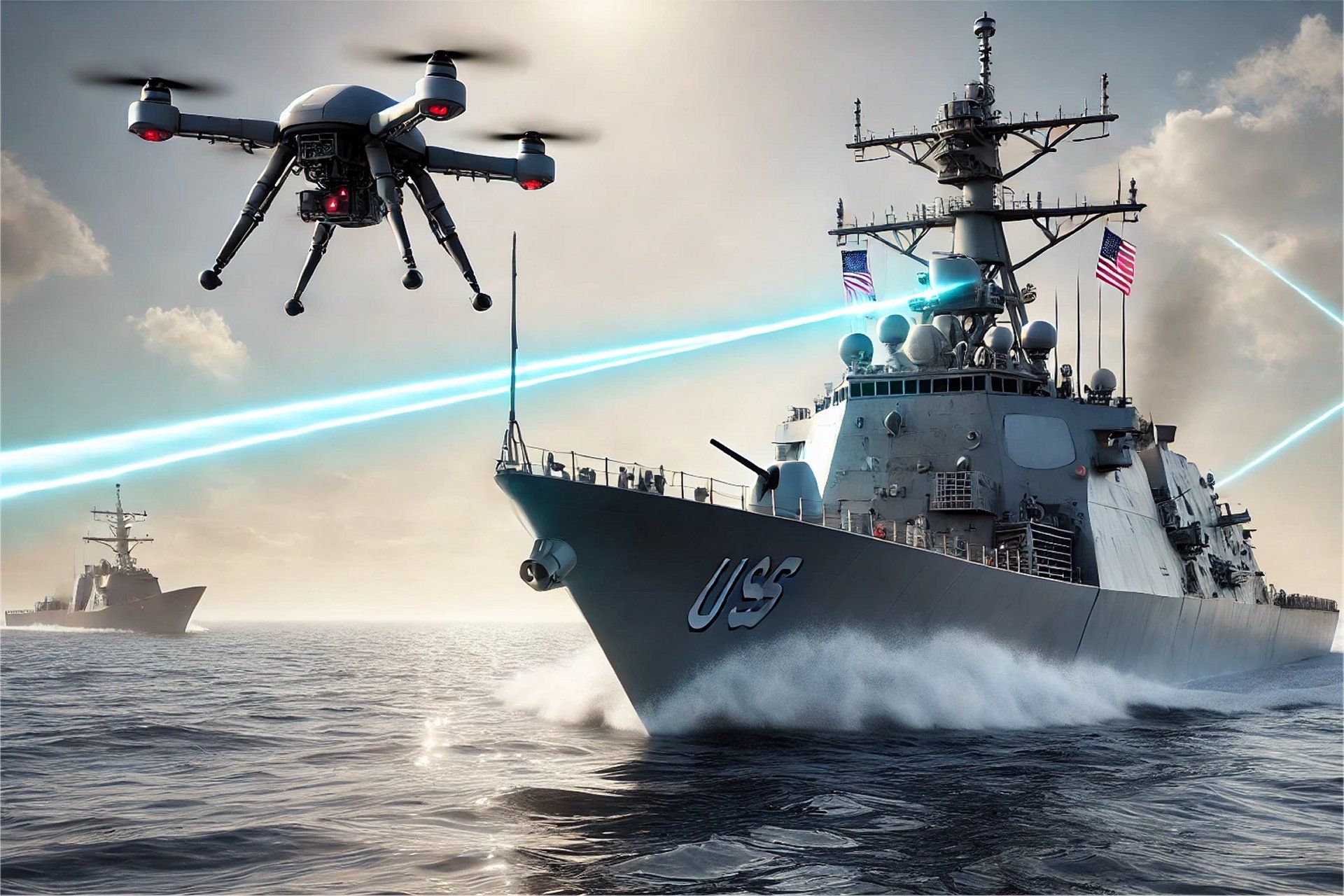Breaking News
US Navy accelerates development of shipboard lasers for enhance defense capabilites.
The US Navy is pushing forward with the development of shipboard solid-state lasers (SSLs) as part of its broader strategy to bolster surface-ship self-defense capabilities. The Navy's fiscal year 2025 budget request includes continued funding for research and development of these cutting-edge technologies.
Follow Army Recognition on Google News at this link

Artist rendering of a US Navy warship firing laser. (Picture source: Generated by AI)
The Navy's interest in SSLs dates back to 2014, with the installation of its first prototype capable of countering surface craft and unmanned aerial vehicles (UAVs). Since then, the Navy has made significant strides, developing and deploying additional SSL prototypes with enhanced capabilities. Future iterations aim to counter advanced threats such as anti-ship cruise missiles (ASCMs).
Key programs in the Navy's laser development initiative include:
- Solid State Laser Technology Maturation (SSL-TM)
- Optical Dazzling Interdictor, Navy (ODIN)
- Surface Navy Laser Weapon System (SNLWS) Increment 1, or HELIOS
- High Energy Laser Counter-ASCM Program (HELCAP)
The survivability of Navy surface ships against sophisticated threats from adversaries, particularly China, is a growing concern. These adversaries possess large numbers of UAVs and anti-ship missiles, including advanced models. The Navy's current defense systems, reliant on surface-to-air missiles (SAMs) and Close-in Weapon Systems (CIWS), face limitations such as limited ammunition (depth of magazine) and unfavorable cost exchange ratios.
SSLs offer promising solutions to these challenges. They are electrically powered, allowing for repeated use as long as the ship's electrical systems are operational. The cost per shot for SSLs is dramatically lower, ranging from $1 to $10, compared to the high costs of traditional SAMs.
Recent Operational Insights
Operations in the Red Sea and Gulf of Aden since October 2023 have underscored the limitations of current defense systems. The Navy has expended significant resources, using over 100 Standard surface-to-air missiles, costing up to $4 million each, to counter threats from Houthi forces in Yemen. This highlights the urgent need for more cost-effective solutions.
Admiral Lisa Franchetti, Chief of Naval Operations, reported in February 2024 that Navy destroyers in the region successfully intercepted 14 anti-ship ballistic missiles, 7 cruise missiles, and over 70 drones. However, the financial burden of these operations has been substantial, approaching $1 billion.
Development Roadmap
The Navy is actively developing SSLs with improved capabilities. The SSL-TM program has already seen successful tests, such as the Laser Weapons System Demonstrator (LWSD) disabling a UAV in 2020. ODIN systems have been installed on eight Arleigh Burke-class destroyers to provide counter-ISR capabilities. HELIOS, delivered in 2022, is now operational on USS Preble (DDG-88).
The HELCAP program aims to develop high-energy lasers capable of defeating ASCMs, addressing challenges such as atmospheric turbulence and precision targeting.
Future Outlook
The Navy is poised to increase funding for directed energy solutions, aiming for aggressive deployment within the next five to ten years. Secretary Carlos Del Toro emphasized the need for significant investment in laser systems, expressing regret over missed opportunities in the past.


























